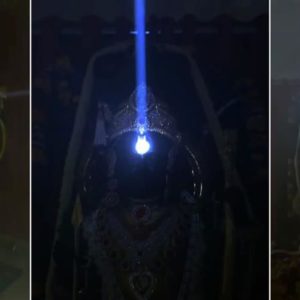Berlin
Scientists have successfully retrieved DNA of extinct human ancestors from caves with no skeletal remains, an advance that could shed new light into human evolution and history.
While there are numerous prehistoric sites in Europe and Asia that contain tools and other human-made artefacts, skeletal remains of ancient humans are scarce.
Researchers of the Max Planck Institute for Evolutionary Anthropology in Germany have therefore looked into new ways to get hold of ancient human DNA.
From sediment samples collected at seven archaeological sites, the researchers “fished out” tiny DNA fragments that had once belonged to a variety of mammals, including our extinct human relatives.
They retrieved DNA from Neanderthals in cave sediments of four archaeological sites, also in layers where no hominin skeletal remains have been discovered.
In addition, they found DNA of Denisovans in sediments from Russia.
These new developments now enable researchers to uncover the genetic of the former inhabitants of many archaeological sites that do not yield human remains.
By looking into the genetic composition of our extinct relatives, the Neanderthals and Denisovans, the researchers can shed light on our own evolutionary history.
However, fossils of ancient humans are rare, and they are not always available or suitable for genetic analyses.
“We know that several components of sediments can bind DNA,” said Matthias Meyer of the Max Planck Institute.
“We therefore decided to investigate whether hominin DNA may survive in sediments at archaeological sites known to have been occupied by ancient hominins,” said Meyer.
Researchers collected sediment samples covering a time span from 14,000 to over 550,000 years ago.
Using tiny amounts of material the researchers recovered and analysed fragments of mitochondrial DNA — genetic material from the mitochondria, the “energy factories” of the cell — and identified them as belonging to twelve different mammalian families that include extinct species such as the woolly mammoth, the woolly rhinoceros, the cave bear and the cave hyena.
The researchers then looked specifically for ancient hominin DNA in the samples.
“From the preliminary results, we suspected that in most of our samples, DNA from other mammals was too abundant to detect small traces of human DNA,” said Viviane Slon, PhD student at the Max Planck Institute.
“We then switched strategies and started targeting specifically DNA fragments of human origin,” Slon said.
Nine samples from four archaeological sites contained enough ancient hominin DNA for further analyses, researchers said.
Eight sediment samples contained Neanderthal mitochondrial DNA from either one or multiple individuals, while one sample contained Denisovan DNA.
Most of these samples originated from archaeological layers or sites where no Neanderthal bones or teeth were previously found.
The study was published in the journal Science.




 German police target China-linked human smuggling gang with raids on homes and businesses
German police target China-linked human smuggling gang with raids on homes and businesses

























